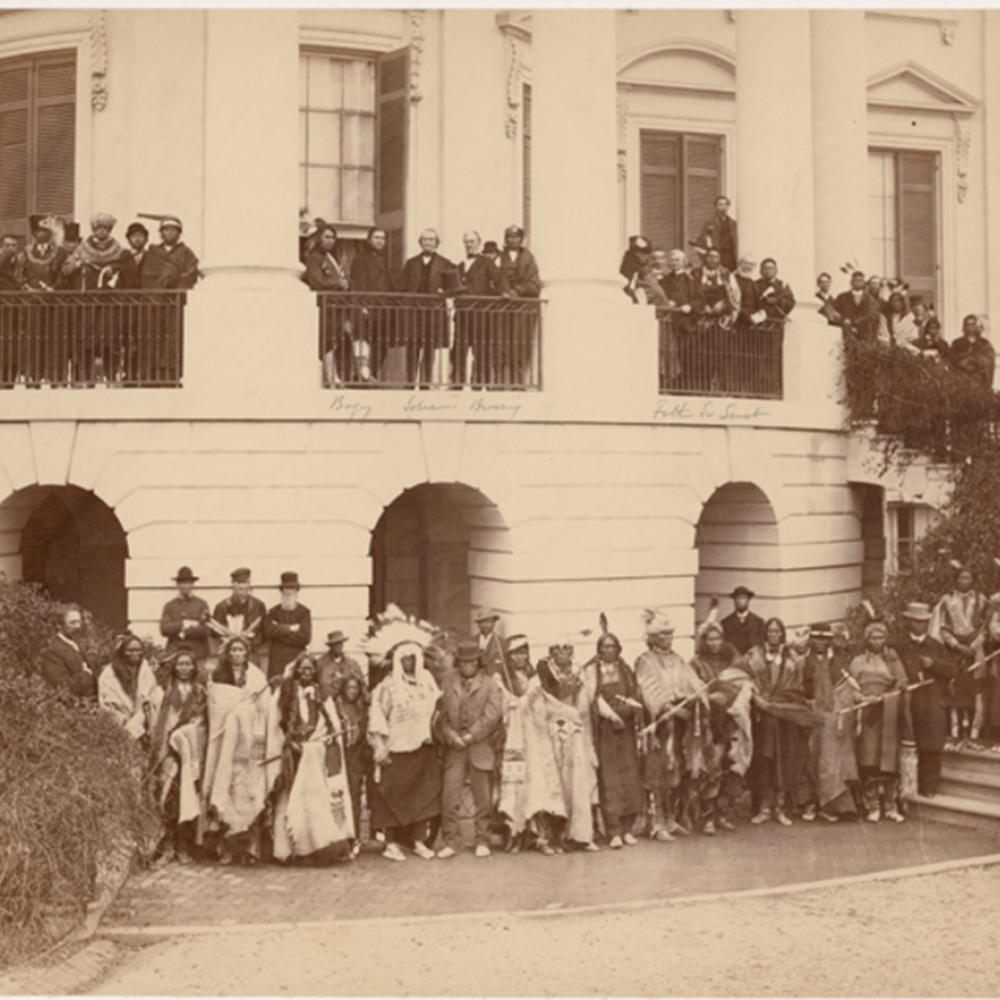“I understand what you want . . . from the few words I have heard you speak,” said Chief Flat Mouth of the Pillager Band of Ojibwe to a group of U.S. government officials in 1855. “You want land.”
The assessment was spot on. Along with fifteen other delegates representing the Pillager, Mississippi, and Winnibigoshish bands, Flat Mouth had traveled more than a thousand miles to Washington, D.C., where he found himself negotiating a treaty that, three years later, would help form the state borders of Minnesota. In the almost rustic legalese of the resulting document, the Native Americans ended up relinquishing territory “beginning at a point where the east branch of Snake River crosses the southern boundary-line of the Chippewa country, . . . running thence, up the said branch, to its source; thence, nearly north in a straight line, to the mouth of East Savannah River,” and so on—a massive region in what would become the northwest corner of the state.
“Why Treaties Matter: Self-Government in the Dakota and Ojibwe Nations,” a new traveling exhibition mounted by the Minnesota Humanities Center, the Minnesota Indian Affairs Council, and the National Museum of the American Indian, takes a hard look at the history of this and the twenty-four other agreements that the United States hammered out with Minnesota tribes between 1805 and 1867. Some were peace treaties brokered by the government between tribes. Others were treaties of friendship, meant to ensure amicable relations between European and Native Americans. But the majority—sixteen of those twenty-five—were land-cession treaties, similar to the one that Flat Mouth so pithily summarized.
Why Sign?
Representatives of the Native American tribes involved in treaty negotiations were often and, as the nineteenth century wore on, increasingly pressured into signing the agreements. “While there were no guns to their heads,” says Mark Hirsch, a historian at NMAI and one of the curators of the show, “they knew that if they balked, if they didn’t give up the territories, nothing good was going to happen.” America was pushing aggressively westward into their lands: There were newly built military forts, with their implied threat of violence, to consider, and, of more immediate concern, the devastating impingements of white settlers on the natives’ traditional means of subsistence—hunting, fishing, and harvesting wild rice. The Indians were starving. “Selling land became a way to survive,” says Hirsch. “Even the fur trade had dried up. There was nothing else. A lot of native leaders began to see the treaties as the only way to keep their people alive.”
In exchange for huge swaths of land—hundreds of thousands of acres, in some cases—the tribes were promised lump sums of cash, agricultural equipment, annuities for education, the services of government blacksmiths, and reservations. The reservations, the exhibition emphasizes, were not given to the Indians, as is commonly thought, but rather retained by them, the last vestiges of their original lands. Also retained in some treaties were the natives’ rights to hunt and fish in the ceded territories—rights that, because they apply “out of season,” stir the ire of certain nonnative game and wildlife groups today. “These are rights that native peoples have had since time immemorial,” explains David O’Fallon, president of MNHC.
An Underlying Concept of Nationhood
At the heart of the exhibition is a straightforward message, says Hirsch, more important than any of the specific provisions outlined in the treaties. “What these treaties are, essentially,” he says, “are agreements between nations. Treaties are not made by any entities other than nations, and agreements between nations are inviolable.” In other words, by making treaties with Native American tribes, the United States tacitly recognized their status as nations, independent, and endowed with inherent rights of self-determination not unlike those on which the country itself was founded. “That notion of nationhood,” he continues, “stipulates the basis on which modern tribal sovereignty rests. And the things that the tribes are doing today—I’m thinking of gaming, providing health services, housing, education services—flow from an understanding that they have always been sovereign.”
“The treaties invite us not just to look at the history,” adds O’Fallon, “but to consider our common future together. These are courageous people, who, against enormous odds, have created a culture, kept an identity, and built nations that have succeeded in many dimensions. The challenge to us now is to ask what kind of future can we create together: How will we share the land and the water, the education system, the cultural values, and grow an economy that is equitable and sustainable?”
The Minnesota treaties represent only a fraction of the approximately 370 agreements that the United States negotiated with various native peoples between 1777 and 1871—a fact that, O’Fallon hopes, will inspire other states and tribal nations to work together to create similar exhibitions. “Knowing the history and the current implications of these treaties,” he says, “is something that many other native nations across the U.S. are going to find valuable as a piece of building their own identity and strength going forward.”


